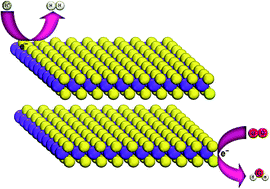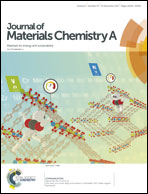Understanding the high-electrocatalytic performance of two-dimensional MoS2 nanosheets and their composite materials
Abstract
Two-dimensional (2D) layered molybdenum disulfide (MoS2) materials have attracted a wide range of attention due to their unique physical and chemical properties as well as their tunable electronic structures. Nowadays, hydrogen evolution reaction (HER) in water splitting is crucial to the cost-effective production of the pure hydrogen fuel, while oxygen reduction reaction (ORR) in fuel cells has been suffering from sluggish reaction kinetics even if a high loading of platinum is applied. In this context, it is of great urgency to develop new catalysts comparable to traditional noble metal catalysts in electrocatalytic activity but composed of earth-abundant elements. In the past decade, 2D layered MoS2-based materials have demonstrated great potential as non-noble metal catalysts for both HER and ORR to meet the two aforementioned requirements. To this end, we conduct this survey aimed at summarizing the recent efforts in addressing electrocatalytic issues involved in HER and ORR activities using 2D MoS2 materials. Starting from an introduction on the superiorities of MoS2-based electrocatalysts for HER and ORR in this review, we then discuss the critical obstacles faced by MoS2 nanosheets with respect to their catalytic activities. Subsequently, we summarize the recent strategies for improving the catalytic activity of MoS2-based materials and the updated advances. In the end, we suggest potential pathways for high-catalytic performance comparable to those of their noble-metal counterparts and give some perspectives on practical applications of MoS2-based materials in the future. The insightful views from this review are believed to be greatly beneficial for accomplishing a better understanding on 2D layered MoS2-based material catalysts in electrocatalytic activities.

- This article is part of the themed collection: Recent Review Articles


 Please wait while we load your content...
Please wait while we load your content...